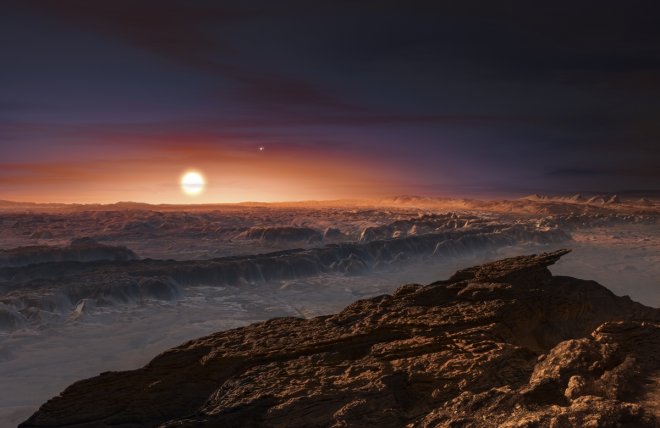
Astronomers from the ALMA Observatory in Chile have detected dust around the Proxima Centauri which could mean that there might be a whole new planetary system very near our solar system. The new discovery has indicated that the star may be home to asteroid-sized rocks and undiscovered planets.
The existence of such a planetary system would mean that we are neighbours of a large group of celestial bodies. Proxima Centauri is located over four light years away from the Earth, where an earth-sized planet was discovered last year, named Proxima b. It is the closest planet to our solar system. Now, there is a possibility for more planets nearby, reveal emissions from cosmic dust clouds.
The observed structures are said to be similar to the larger belts in our solar system and are made of rocks and ice particles that are supposed to form planets. "The dust around Proxima is important because, following the discovery of the terrestrial planet Proxima b, it's the first indication of the presence of an elaborate planetary system, and not just a single planet, around the star closest to our Sun," says Guillem Anglada from the Instituto de Astrofisica de Andalucia (CSIC) and the lead author of this study.
The cosmic dust has been found to lie in a belt extending up to a few hundred kilometres and having a mass equal to one hundredth of the Earth's mass. It has a temperature of -230 degrees Celsius, as cold as our solar system's Kuiper Belt.
"This result suggests that Proxima Centauri may have a multiple planet system with a rich history of interactions that resulted in the formation of a dust belt. Further study may also provide information that might point to the locations of as yet unidentified additional planets," says Anglada, as reported by Eastern Southern Observatory.
Data from Atacama Large Millimeter Array (ALMA) also point towards the possibility of two more dust belts further from Proxima Centauri. However, this information has not been confirmed yet.
Experts are planning a mission, called the Breakthrough Starshot, to explore this region of the cosmos. They intend to send a tiny spacecraft to the system with microprobes attached to laser-driven sails, to check if there are other planets waiting to be found.
Such a huge amount of space dust around the Proxima Centauri suggests that there might be many planets hidden from our sight. If the raw material to form planets is so much in abundance, there is a decent chance that some of it actually formed planets, in which case a complex system of celestial bodies might still be discovered.









